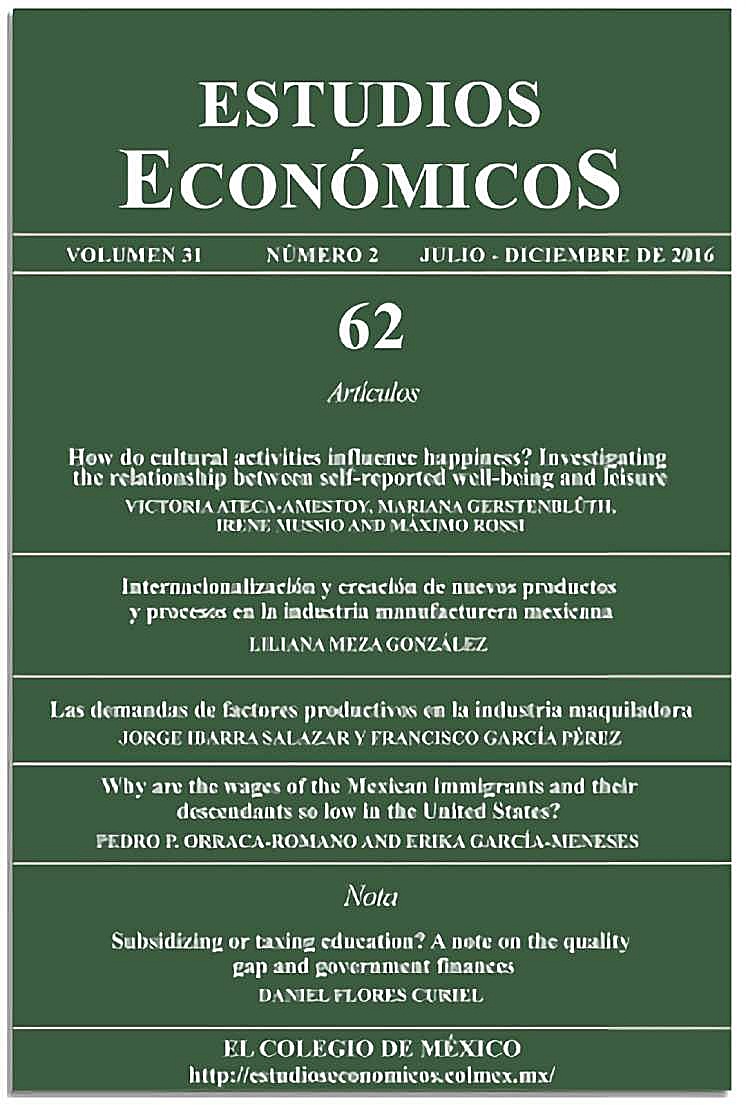Published 2016-07-01
Keywords
- occupational segregation,
- wage differentials,
- Mexican-Americans
How to Cite
Abstract
This paper studies the role of occupational segregation in explaining the low wages among first, second and third generation Mexican immigrants in the United States. Mexican-Americans earn lower wages than African-Americans mainly because they possess less human capital. With respect to Americans of European descent, their lower wages are also a product of their smaller rewards for skills and underrepresentation at the top of the occupational structure. Occupational segregation constitutes an important part of the wage gap between natives and Mexican-born immigrants. For subsequent generations, the contribution of occupational segregation to the wage gap varies significantly between groups and according to the decomposition used

